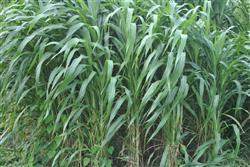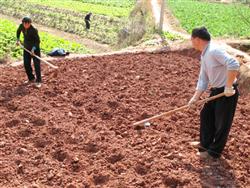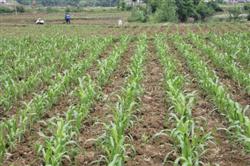Sweet Sorghum planting Technology: is Sweet Sorghum good?

Is sweet sorghum good to grow? There are no netizens to provide planting technology sweet sorghum as a high-quality forage grass, with high sugar content, high protein content, rich nutritional value, good palatability, strong adaptability and other characteristics, is herbivorous livestock like to eat forage grass, deeply loved by the majority of farmers. The following is the planting technology of sweet sorghum arranged by the planting network for netizens' reference. 1. Fertilizing sweet sorghum on flat land has small seeds, weak top soil capacity, and loose requirements for soil quality. The soil with pH value of 5.0 Murray 8.5 can grow, so the land should be carefully cultivated, fine and flat. If the land is barren, about 4000 kg of farm manure can be applied per 0.067 ha, and chemical fertilizer can be applied along the ditch with 10 kg of ammonium hydrogen phosphate, 10 kg of urea or 50 kg of compound fertilizer. 2. Sowing at the right time is the best when the external average temperature in Northwest China reaches 15 ℃, that is, 4 Mel to July. When sowing, it can be sowed by machine or on demand. The sowing amount is between 250 and 750 grams per 0.067 hectares, and the sowing depth is generally 5 centimeters. When sowing on demand, the distance between holes is 15 meters and 20 centimeters. When the soil moisture is high, it needs shallow sowing and deep sowing when the soil moisture is low. Compacted with fine soil or fine sand after sowing. 3. Field management of sweet sorghum morning seedlings in order to avoid competing with each other for nutrients and water and reduce soil fertility consumption, in order to facilitate the cultivation of strong seedlings, the weak seedlings in the over-dense area can be removed at the 2muri 3-leaf stage, and the seedlings should be fixed at the 4 Mustang 5-leaf stage, requiring the plants to keep strong seedlings at the same distance. Due to poor sowing quality or underground pests and other reasons, seedlings should be replenished in time when lacking seedlings and breaking ridges. Seedlings in dense areas should be taken when replenishing seedlings (pay attention to damage roots as little as possible, take while mending, and cut off leaf tips in order to reduce water evaporation). After replenishing seedlings, fertilizer and water are applied to them to promote them to catch up with normal seedlings quickly. Sweet sorghum has the habit of leafing. If it is divided too much, it will consume a lot of nutrients and affect the growth rate of the main stem. In order to remove leaves at the right time, it is better to leave 6 leaves per plant. If you leave seeds, you need to remove all leaves. 4. Cultivating and topdressing sweet sorghum in the seedling 2mur3 leaf stage, the first mid-tillage can increase the soil temperature, eliminate weeds, prevent drought and preserve soil moisture. The second intertillage was carried out in combination with fixed seedlings at the 6-leaf stage of 4Murray, with a depth of about 10 cm, in order to cut off the surface roots and promote the roots to root down. The third intertillage is generally carried out 15 days after the second intertillage, and small soil cultivation is carried out in parallel. When the plant grows to 70 cm high, the soil is cultivated at the base of sweet sorghum, forming ridges between rows to promote the growth of supporting roots, enhance absorption capacity, prevent lodging, drainage and facilitate irrigation. At this stage, 15 kilograms of urea or ammonium hydrogen phosphate was applied to sweet sorghum roots. 5. irrigating sweet sorghum in time is resistant to drought, but water is irrigated at least 3 times during the growing period. In different seasons, depending on the temperature, if the climate is hot and dry for a long time, water should be irrigated in time to ensure the normal growth of sweet sorghum. Watering before heading is the most important in the growth process of sweet sorghum, which is beneficial to the flowering and fruiting in the later stage and the accumulation of sugar in the culm. 6. Pest control (1) aphids: sweet sorghum has high sugar content and is easy to be harmed by aphids. It is easy to occur in hot and dry weather, so it should be prevented as soon as possible. Control methods: if aphids are found, spray deltamethrin, cypermethrin or pollution-free pesticides in proportion. Note: sweet sorghum varieties are allergic to organophosphorus pesticides and should not be used. (2) borers: if borers are found to harm the heart leaves, deltamethrin is sprayed proportionally; if the borers have entered the sweet sorghum stalk, several grains of carbofuran can be sprinkled in the heart leaves; after heading of sweet sorghum, the borers are harmful to the ears, and deltamethrin can be applied proportionally. 7. Harvest sweet sorghum in time. The growing period of sweet sorghum is 45 Mel 60 days. When harvested at the right time, 2 or 3 crops can be harvested at the right time, and harvested in time after ripening to facilitate the growth of the second crop. Harvest in sunny days is convenient for incision healing and oblique cutting when harvesting. The stubble is 3 Mel and 5 cm neatly consistent. If you keep the seed, select a strong leaf stem, pay attention to cultivate the soil to prevent lodging, harvest in time after maturity, prevent bird food. Click to get more sorghum planting technology click to get more grain planting technology
- Prev

Sweet sorghum planting technology: how to manage sweet sorghum?
How to manage sweet sorghum? Also ask netizens to help introduce the planting and management of sweet sorghum can refer to the following listed methods. 1. Fine soil preparation and adequate base fertilizer. Because the seed of sweet sorghum is small and the ability of top soil is weak, it grows slowly in the early stage and needs more water and fertilizer in the middle and later stage. Therefore, the land should be deepened.
- Next

Sorghum planting: what are the temperature requirements for sorghum?
What are the temperature requirements for sorghum? Please introduce that sorghum is a temperature-loving crop. The whole growth period requires a higher temperature than the municipal system. However, in different growth stages, the temperature requirements are also different. The lowest temperature for sorghum germination is 6 ℃. Sowing at this temperature can produce seedlings, but germinate slowly.
Related
- The first cup of black tea in spring, the flavor and history of tea gardens in Kenya, Africa
- The computer can not only choose potatoes, but also grow tea rice. AI will grow winter oolong tea champion.
- It is not only the inflated tea bitten by insects, but also engraved with the four seasons tea in Beipu.
- The Oriental Beauty Tea Festival in Zhuxian County takes the stage at the weekend to experience the plus-size feast of oil tea.
- & quot; Oriental Beauty Tea & Exploration of Emei in Hsinchu, the hometown of quot;
- The new variety of strawberry "Tainong 1" dessert is the first choice with mellow aroma. Crimson gorgeous
- History of Tea in Taiwan: from Wild Inner Mountain to Export Tea Garden
- Two types of Taiwan Oriental Beauty Black Tea won the British three-Star Award for Childhood Tea Xiang Zhang Jiaqi changed from pilot to champion tea maker.
- Banana species and varieties: the planting history of Taiwan Xianren banana and dwarf banana is long, is banana disease resistant?
- Coffee planting Technology: Qianjie Coffee from Seedling to harvesting

